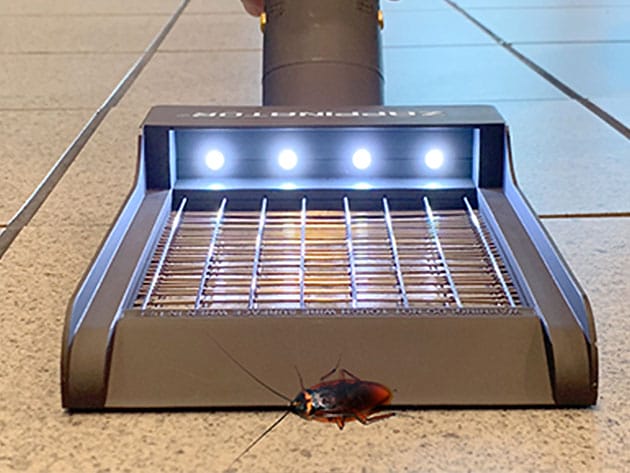Zappinator®: Bug Zapper for $24
March 19, 2020 / by Marco / Categories : Business, deals, design, entrepreneur, website





KEY FEATURES
The most powerfully advanced electronic insect zapper ever created! Zappinator will defend you from all the insects that invade your house. With a 4,500-volt double-sided power grid, insects will be exterminated on contact in the blink of an eye. It’s as easy as 1,2,3: 1) Trap the bug against the grid 2) Zap the bug by pressing the activation button 3) Scoop up the bug in the Zappinator and throw it away without ever using your hands! The Zappinator has two settings: one for regular flying insects and small creepy-crawlers, and a higher intensirt setting for larger critters like cockroaches, scorpions, and more. Plus, there’s a switch that activates 4 LEDs to help see under tables or behind furniture. Insects will never be able to escape from Zappinator. Keep your house clean without getting your hands dirty!
- Battery-operated for ease of use makes it perfect for both indoor & outdoor use
- 4,500-volt double-sided power grid kills bugs on contact
- LED lights for better visibility where bugs hide
- 2 settings from high to regular, depending on bug size
Don’t press the activation buttons for more than 2 seconds when zapping a bug.
PRODUCT SPECS
Specs
- Color: black
- Materials: plastic, metal
- Product dimensions: 18.7″H x 5.7″L x 1″W
- 4,500 volts
- Double-sided power grid
- 4 bright LED lights
- 2 settings: high, regular
- 10% eco-friendly
- Manufacturer’s 90-day warranty
Includes
- Zappinator®
- 2x AA batteries
OTHER ARTICLES YOU MAY LIKE

A SMALL BUTTON, A BIG MILESTONE: MY FIRST SUPER THANKS
Every creator has milestones that feel both modest and momentous. Your first upload. Your first comment. Your first subscriber. And then one day, among the usual notifications, a new one pops up: your first Super Thanks. Mine came from a generous viewer, Frank Castlenut, who left a donation of five dollars alongside a kind note. […]
read more
NEW RUNNING BELT ON TEST: FIRST IMPRESSIONS AND HONEST THOUGHTS
There’s a special kind of anticipation that comes with unboxing fresh kit, especially something as personal as a running belt. It’s the bit of gear that sits closest to you on every run, carrying your phone, keys, gels and—in this case—a water bottle, all while ideally disappearing from your awareness once you’re moving. Today’s subject […]
read more

